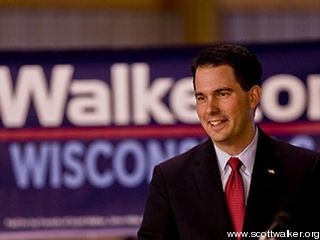“In recent injury/product liability news, the National Resources Defense Council (NRDC) filed a lawsuit against the FDA alleging it failed to regulate toxic substances in certain consumer products.”
Thus began the latest manufactured consumer crisis illustrating the powerful union between radical environmentalists and the trial bar. Add a sympathetic Congressman and a manipulative triad is born.
Product liability wrangling follows a clear path – first the setup, then vague accusations of the product’s damaging properties followed by class action cash flow.
In just one sentence, the above blog comment posted by Texas personal injury law firm captures the essence of how product liability wrangling starts – and, ultimately, why.
Despite a forty-year record of reducing germs, slowing their transfer and being deemed safe by the FDA and EPA, the latest victim of the NRDC and friends are antimicrobial products – particularly those with ingredients Triclocarban and Triclosan.
These synthetic antimicrobial agents kill or retard the growth of fungus, mildew and bacteria in commercial and consumer products including hand soap, toothpaste, cosmetics, restaurant equipment, air conditioning coils, surgical scrubs and the Swiss Army Knife.
In early 2010 — and with no scientific backup — Congressman Ed Markey (D-MA) sent one letter to the CEOs of thirteen companies with Triclosan products urging them to remove it from the manufacturing process, and another to the FDA, asking the agency to ban it. A month later Mr. Markey introduced a bill aimed at antimicrobials, instructing EPA to list 100 substances that “may” be in drinking water and could “possibly” be harmful or better yet, have a “similarity” to a substance that does. And test them all- at taxpayers’ expense.
The bill had only five co-sponsors and went nowhere, but served as the setup.
Last summer the NRDC formalized its attack on antimicrobial products by filing suit against the FDA for not taking action against Triclosan. The FDA is reviewing the compounds, noting since it first investigated them in 1978, there is no evidence that they poses any threat to consumers or the environment.
The trial lawyers’ new target alert was issued shortly after the NRDC request. As with other consumer products where no actual victim can be found, some trial lawyer somewhere will soon file suit against antimicrobial manufacturers based on “government actions” (FDA’s ongoing study) or “false” marketing (“you failed to warn us on the dangers of this product even though there aren’t any.”)
To ensure success, the NRDC has wisely sprinkled former staff members all over the Administration and Capitol Hill. When Congressman Markey served as Chair of the House Energy and Environment Subcommittee, he hired a former NRDC legislative director as a chief counsel.
Another former NRDC attorney is an Associate Administrator at EPA, while others work on environmental issues for former Speaker Nancy Pelosi (D-CA) and Energy and Commerce Chair Henry Waxman (D-CA.)
The NRDC also has a history of benefitting financially from product liability schemes. Its most notorious incident occurred in 1989 when it claimed a chemical used in ripening apples was a potent carcinogen and responsible for many childhood cancers. Although lab tests showed merely a theoretical risk required consuming 5,000 gallons of apple juice a day, it was a successful campaign for NRDC – but cost American apple growers jobs and an estimated $200M.
A subsequent memo from NRDC’s public relations consultant (who previously worked for several Marxist governments) published in The Wall Street Journal gave insight into the revenue side of unfounded product safety accusations: “We designed (the Alar campaign) so revenue would flow back to the NRDC from the public … to date there has been $700K in net revenue from it.”
In 400 BC, Hippocrates made the startling announcement that diseases do not come from the Gods. During the 1840’s, Hungarian physician Ignaz Semmelweis insisted on hand washing to see if it reduced incidents of post-operative infections. It did.
Since the early 1900s when communicable diseases like Diphtheria, Tuberculosis and Dysentery were the leading cause of death, antimicrobial agents of all types have radically decreased the incidence of these illnesses while acting as a teaching aid for hand washing and cleaning the cutting board after slicing chicken.
It’s clear who the losers in this soap war will be – consumers, and workers employed in the manufacture of antimicrobial products.
A consumer survey released earlier this year by opinion research company Fabrizio Ward makes clear that on antimicrobial products, it’s the American public against coercive utopians and trial lawyers: 74% of adults use antibacterial soap, 83% oppose government banning it, and 66% would be ticked if they did. A full 84% had no safety concerns with antimicrobials and tagged them as “very useful” in hospital and clinical settings.
As usual, the people are smarter than their government. Lets hope they prevail.


COMMENTS
Please let us know if you're having issues with commenting.